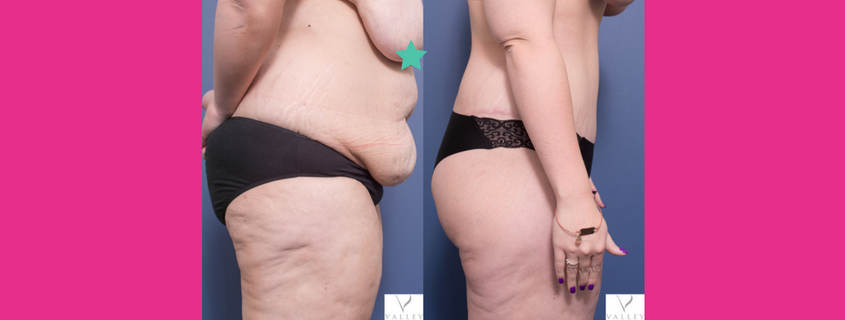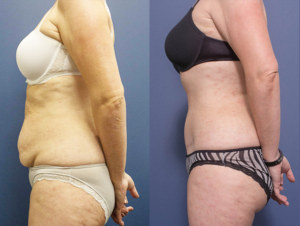
A tummy tuck or abdominoplasty is a popular procedure for massive weight loss patients and women after pregnancy. It is the removal of excess skin often left after losing a large amount of weight but can also help repair the internal abdominal muscles that can separate during pregnancy. The thought of undergoing any surgery can be daunting, but Dr Matthew Peters, Specialist Plastic Surgeon from Valley Plastic Surgery in Brisbane helped us create a step by step guide to the tummy tuck procedure so you are better prepared and know what to expect.
1. Choose your surgeon wisely

Having a qualified Plastic and Reconstructive Surgeon you can communicate with and have faith in will go a long way to helping you stay calm and confident, not to mention get the best results. Dr Peters says it’s important that a patient feels they can discuss anything with their surgeon and that no question is a silly one. “It’s important to me to foster an excellent rapport with my patients. I believe open lines of communication translate into us all striving for the best possible physical and mental outcome for the patient.”
You will need to discuss any medications you are taking or have recently been taking (including naturopathic supplements), along with any allergies you may have with your surgeon and/or anesthetist. This is extremely important as it may affect your blood clotting amongst other things. You may be required to stop taking one or any of these but your surgeon will advise you.
You are also required to stop smoking at least 8 weeks before your surgery and some surgeons even go so far as to not operate on a smoker because of the increased risk of complications.
Dr Peters says he always takes a thorough medical history during consultations with his patients. “This is important to ensure that we can minimise risks and it helps to make the best plan to meet your individual needs.” A referral letter from your regular GP can help with this.
2. The tummy tuck procedure

The abdominoplasty procedure usually involves a horizontal incision being made on the lower abdomen on your bikini line and for those patients who might have had a caesarian the surgeon may be able to make the incision in the same location (meaning the scars will be in the same spot). The abdominal muscles are tightened if necessary and any excess fat and skin are removed. It is quite common for your belly button to be moved so it sits in a more desirable position. You may want to discuss some of these things you with your surgeon in your consultation.
Dr Peters recommends that as this is an elective procedure the decision to have an abdominoplasty should not be rushed. “Patients who are looking to lose further weight or intend to get pregnant should consider delaying this procedure. If you are healthy and have realistic expectations you are giving yourself the best chance of a speedy recovery and great outcome.”
3. Packing for the hospital and preparing for when you return home
After the surgery, it’s the little things you will be grateful for. With Dr Peters’ help we’ve provided an essential checklist (but click here to see one patient’s honest and extensive list):
- Compression garments – some surgeons provide them, some don’t. Discuss what you will need with your surgeon.
- Comfortable and easy to wear clothes. Button down shirts are perfect. You won’t want to be lifting your arms and reaching over your head to pull a t-shirt on after your surgery, and you’ll never be so glad for loose fitting, soft pants. A dressing gown will be super handy.
- Phone, books, iPad, crossword puzzles for the hospital – it may seem trivial, but having something to do and keep your mind off things while you’re in hospital will come in extremely handy. Don’t forget to have a bottle of water, your lip gloss, moisturiser and a few crackers/snacks there too!
- Home help – when you get home it will be important that you don’t have to pick up the kids, stand up in the kitchen cooking dinner and other things. Have a week’s worth of meals cooked so all you have to do is heat them up (or have hubby/family member/friend do it for you!).
- Extra pillows on hand – these will help you get comfortable especially considering you have to sleep on your back for a few nights after the surgery.
- Scar cream/gel – some, such as Stratamed, are able to be applied straight after surgery (double check with your surgeon).
4. Support Team
One of the best things you can do to prepare for your surgery is to have a support team. This may be your partner, family or friends who can help drive you to and from the hospital, do the things at home that you can’t do during your recovery and help wherever you need. We also recommend you consider our online support network and closed Facebook groups – these groups are a great place to chat to others going through similar procedures and who probably have very similar questions and advice to help you through it.
We hope this guide helps you to prepare for your surgery and if you have any other questions at all please email us at [email protected]. If you’d like to arrange a consultation with Dr Matthew Peters phone 07 3488 8188.
Further Information about Tummy Tuck
- Recovery after Tummy Tuck or Abdominoplasty
- Abdominoplasty Surgery – Tummy Tuck Sydney
- Real Patient Tummy Tuck/ Abdominoplasty Before and After Gallery by Dr Carmen Munteanu
- Perth Plastic Surgeon|Tummy Tuck Abdominoplasty – Dr Guy Watts
- What Does a Torn Stomach Muscle Feel Like | GCPS – Dr Mark Doyle
